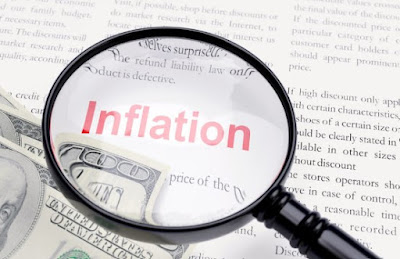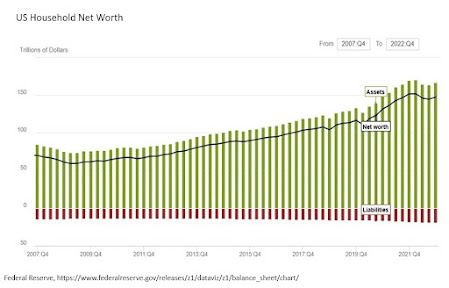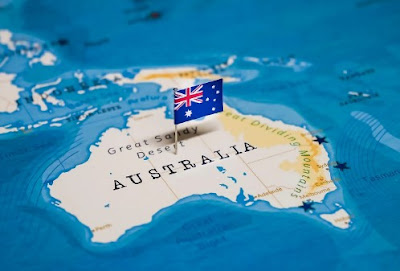Over the past three months and the past month, the dollar has fallen against all the major currencies but the British pound. Sterling's underperformance can largely be explained by uncertainty created by the Tory government's sponsored referendum on continued EU membership.
Most of the polls show those wanting to remain hold on to a slight lead. However, the potential impact is widely understood to be so powerful, that many investors have sought protection. This is being accomplished by reducing sterling exposure directly or buying insurance through the options market. Implied volatility is elevated and the premium being paid for (three-month) puts over calls is at record levels.
The broad-based dollar weakness does not need a new paradigm to be understood, even though the European Central Bank and the Bank of Japan have adopted negative rates. The weakness of the US economy and the caution by the Federal Reserve to raise rates again after the December lift-off has undermined the greenback.
Following the drawdown in February wholesale inventories reported on April 8, the Atlanta Fed GDPNOW tracker slashed its Q1 estimate to 0.1%, sending the doomsayers in the traditional media and blogosphere chattering with the "told you so" rants. One must have been born with the morning dew to get so worked up by the news. In recent years, Q1 GDP has typically been exceptionally weak.
Between 2010 through 2015, the US economy averaged 0.75% growth at an annualized rate in the first quarter. Growth in the remainder of the year averaged around 2.5%. Except in the first quarter of 2012, the US economy performance in the first three months of the year has been the worst of the calendar year. There have been various attempts to explain this pattern, but the key takeaway for investors is to get over it because the economy will.
In fact, meeting demand from inventories will set the stage stronger growth again in the coming months. Households, which drive more than 2/3 of the economy through consumption, are in a better fiscal position in aggregate. The savings rate has risen. Revolving credit (credit card) growth is modest.
The economy has created net new 2.8 mln jobs over the past 12-months. On April 13, the US will report March retail sales. The headline may be restrained by gasoline prices and the serially softer auto sales, but the components used for GDP calculations are expected to rise 0.4%. This would be the strongest since last November, and lend support to our understanding that the US economy improved as Q1 drew to a close.
The drag from the manufacturing sector is lessening. The March manufacturing surveys by various regional Federal Reserve banks showed improvement and the national manufacturing ISM rose to 51.8 in March after hitting a low of 48.0 at the end of last year. The manufacturing ISM stands at the highest since last July. On April 15, the US is expected to report the third consecutive rise in manufacturing output. Such a streak has not been seen since Q2 14.
The shifting view of Fed policy appears to have overwhelmed other considerations in driving the dollar lower. At the end of last year, the June 2016 Fed funds futures contract implied a 60 bp yield. By the end of last week, it had fallen to 39 bp. The US premium over Germany on two-year money, which does a fairly good job of tracking the euro-dollar exchange rate fell 25 bp since early March.
The US 10-year premium over Japan fell from 204 bp as recently as March 22 to 174 bp on April 7. Although the relationship between this US premium and the dollar-yen exchange rate is not as tight as the two-year spread between the US and Germany and euro, it did not do the greenback any favors.
The stabilization of interest rate differentials is a necessary precondition for the stabilization of the dollar. There were some preliminary signs toward the end of last week that this process had begun. Investors should monitor the development of these interest rate spreads particularly vigilantly in the period ahead.
The US earnings season begins in earnest next week with Alcoa and another 14 of the S&P 500 companies, including a few large banks. Earnings for the S&P 500 are expected to have fallen 8%-9% in the first quarter. It would be the fourth consecutive quarterly decline, the first such streak since the Great Financial Crisis. Keep in mind what is being measured here. It is not that corporate America is not producing profits. In fact, as a percentage of GDP, profits remain near record high. It is that the profits are less than they were a year ago.
One reason Main Street gets concerned about the declining margins is that business may retrench. Although commercial and industry loans growth remains strong, business investment is weak in this cycle. Some economists, including former Federal Reserve Chairman Greenspan, link the soft capex to the weakness in productivity growth.
Beyond capex, however, the fear is that businesses will reduce their hiring and push the overall economy into a recession. However, in the 12-months that corporate profits have been reduced, the private sector added on average 223k jobs a month. In the previous 12-months, the private sectors added 235k jobs a month on average. Given the impreciseness of these measures, for all practical purposes, they are identical.
Technically, the S&P 500 look vulnerable. Last week's decline was the largest since February. The much-watched index is off two of the past three weeks. One of the largest buyers of US shares, Corporate America, is sidelined now as buyback programs are suspended during the earnings period.
The euro turned higher in the middle of the Draghi's post-ECB press conference last month when he indicated (yet again) that the central bank may have exhausted the room to cut interest rates (with a minus 40 bp deposit rate). Several ECB officials have subsequently downplayed this assessment though some claimed Draghi's remarks were evidence of a secret agreement struck in Shanghai at the end of February. The minutes record of the meeting showed that there was a discussion of a deeper rate cut, which also implies that the floor if it is one, is rather soft.
Although it is unreasonable to expect the ECB to take more action before it can implement and monitor the measures it has already announced, investors should be wary of renewed political and economic stresses. The Dutch rejection of the associational agreement with Ukraine is an expression of anti-EU sentiment in a core country and presents a challenge. Spain appears headed for new elections that will likely be scheduled around the UK referendum at the end of June. Before then, there are municipal elections in early May in the UK and Italy. Meanwhile, Ireland and Slovakia are still trying to see if their elections can produce governments. The immigration agreement with Turkey is fraught with risks, including that desperate refugees find new routes into the EU.
Don't forget that at the end of this month DBRS will review Portugal's credit rating. DBRS is the only one of four rating agencies used by the ECB that regards Portugal as investment grade. If DBRS cuts Portugal's rating, the country would not longer qualify for purchases under the ECB's program. Last week, the benchmark 10-year Portuguese government bond yield rose 41 bp to 3.32%. The yield has risen 83 bp over the past three months. The five-year credit default swap finished last year near 170 bp and now is at 270 bp, after peaking in February over 340 bp.
Next week's economic data includes EMU February industrial production figures and the final read of March CPI. Following contracting German, French and Spanish national figures, the risk is on the downside of EMU industrial output. Meanwhile, deflation is expected to be confirmed (-0.1% year-over-year headline CPI).
Brexit fears and the new pressure on Prime Minister Cameron after a poor response to the Panama Papers will likely overwhelm the UK economic data, which includes consumer and producer prices, and the Bank of England meeting. Consumer prices are edging higher after seeming to bottom late last year.
The BOE will keep rates steady by a unanimous vote and the minutes will reinforce perceptions of a central bank that is in no hurry to raise rates. Sterling has declined by 8% this year on a broad trade-weighted basis. Policymakers will not object too vociferously, as it may feed through to lift prices and may be seen helping to reduce the large current account deficit (though after a J-curve effect).
The Bank of Canada also meets in the week ahead, and it too is not expected to change policy. The stronger than expected March employment data reported before the weekend prompted some observers to rule out another rate cut, but the market had already come to this conclusion.
In fact, the Canadian dollar's rally since multi-year lows were reached at the end of January, saw the implied yield of the June 2016 BA futures rise from 50 bp to 90 bp. The 40.6k increase in Canadian employment (four-times more the Bloomberg consensus) was insufficient to lift implied yield of the June BA futures further. The Canadian dollar has appreciated by more than 12% on a trade-weighted basis since the end of January.
The Bank of Canada may revise up its GDP forecasts in light of recent economic data and the more stimulative budget. However, it may also caution the market against prematurely tightening financial conditions.
China will report a slew of data. Investors remain suspicious of the quality of the data. The overall picture that is expected to emerge is one of broad stability. Lending appears to be increasing. Exports may have risen on a year-over-year basis for the first time since last June. Consumer price inflation is broadly steady, just below 2.5%, while the slide in producer prices may moderate. China is expected to report that Q1 growth was around 6.7% (year-over-year) compared with 6.8% in Q4 15.
Contrary to widespread expectations, the yuan strengthened slightly (0.6%) in the first three months of the year. The spread between the onshore and offshore yuan has stabilized at low levels. World markets appear less correlated with China's equities than was the case last August and against earlier this year. Developments still need to be monitored, but the contagion has slackened, and the risks of a hard landing appear to have lessened.
Japanese officials are in difficult position. The yen has strengthened markedly. Since the BOJ announced negative interest rates at the end of January, the yen has risen by 10.25% on a trade-weighted basis (7.6% against the US dollar). The Nikkei has declined even more. Even though the 10-year JGB yield fell by almost 30 bp, overall financial conditions have tightened, and this poses fresh obstacles for policymakers trying to get the economy back on a growth path and defeat the deflationary forces.
Contrary claims of currency wars, it is precisely because the broad arms control agreement is still operative, intervention remains unlikely. It has been more five years since the MOF authorized the BOJ to intervene unilaterally. Until the last week in March, portfolio managers were selling the yen aggressively. Japanese fund managers were buying foreign bonds, and foreign fund managers were selling Japanese stocks (flow ~$130 bln over eight weeks). Speculators in the futures market have a record long yen position (stock ~$110 bln ).
There has been talk that Japanese multinationals have repatriated foreign earnings at the start of the new fiscal year, which may help account for the yen's recent surge. Note that in the past seven years; the yen has strengthened in April in five years. This is one of the most favorable seasonal patterns for the yen.
Neither implied volatility nor the pricing of risk-reversals (calls and puts) reflect a disorderly market. The prohibitions against intervention are high. While moral suasion can be ramped up, the threat of intervention may be more potent than actual unilateral intervention if history is a guide. Intervention that fails to reverse the market would exacerbate the angst of policy makers while emboldening speculative forces.
Tags: Bank of Canada,newslettersent





































